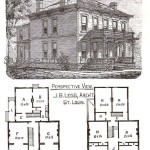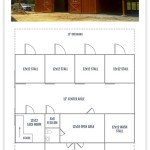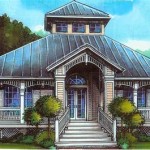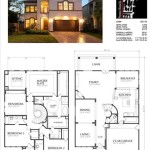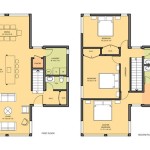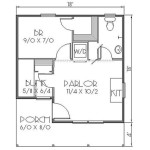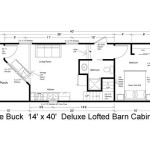Barn Style Storage Shed Plans: A Comprehensive Guide
Barn style storage sheds offer a blend of functionality and aesthetic appeal, making them a popular choice for homeowners seeking additional storage space. These sheds, characterized by their gambrel roofs, provide ample vertical storage and a distinctive visual element to any property. Choosing the right barn style storage shed plan is crucial to ensuring a successful and satisfying building project. This article provides a comprehensive overview of factors to consider when selecting and utilizing barn style storage shed plans.
The defining feature of a barn style shed is the gambrel roof. This roof design, characterized by two slopes on each side, maximizes headroom inside the shed. Compared to a simple gable roof, the gambrel provides significantly more vertical space, allowing for the storage of taller items or the potential for a loft area. This design also contributes to the barn-like appearance, evoking a sense of traditional rural architecture.
Barn style sheds are versatile and can be used for a variety of purposes, including storing gardening equipment, tools, lawn care supplies, seasonal decorations, and even serving as a workshop. The spacious interior makes it easier to organize and access stored items, especially larger or bulky objects. The aesthetic appeal of a barn style shed can also enhance the overall appearance of a property, adding character and charm.
Before embarking on a building project, careful planning is essential. This includes assessing storage needs, determining the appropriate shed size, selecting a suitable location, and choosing the right set of plans. A well-executed plan ensures that the finished shed meets expectations and provides long-term utility.
Determining Your Storage Needs and Shed Size
The first step in selecting barn style storage shed plans is to accurately assess storage needs. This involves taking inventory of the items that will be stored in the shed and estimating the space required to accommodate them comfortably. Consider both current and future storage needs, as requirements may change over time. Overestimating storage needs is often preferable to underestimating, as it provides flexibility and prevents overcrowding.
Once storage needs are assessed, the appropriate shed size can be determined. Barn style sheds are available in a wide range of sizes, from small units suitable for storing basic gardening tools to larger structures capable of accommodating vehicles or serving as workshops. Common sizes include 8x10 feet, 10x12 feet, 12x16 feet, and 12x20 feet, but custom sizes are also possible.
When selecting a shed size, consider the available space on the property. Ensure that the shed will fit comfortably in the chosen location and that there is sufficient clearance around the shed for access and maintenance. Also, consider any local zoning regulations or building codes that may restrict shed size or placement.
The height of the shed is another important consideration, particularly for barn style sheds with gambrel roofs. The increased vertical space afforded by the gambrel roof is one of the primary advantages of this shed style. Ensure that the chosen plans provide sufficient headroom for the intended use, especially if storing tall items or planning to build a loft.
Internal layout is also a key consideration. Think about how the space will be organized. Shelving can double the storage possibilities. Consider whether you’ll be just storing equipment or if you need a workspace.
Understanding Barn Style Shed Plan Components
Barn style storage shed plans typically consist of a set of detailed drawings and instructions that guide the building process. These plans usually include a materials list, a cutting list, and step-by-step instructions for assembling the shed. Understanding the different components of the plans is essential for ensuring a successful build.
The materials list specifies the types and quantities of all materials required for the project, including lumber, roofing materials, siding, fasteners, and hardware. The cutting list provides detailed dimensions for each piece of lumber that needs to be cut, minimizing waste and ensuring accuracy. It is important to carefully review the materials list and cutting list before starting the project to ensure that all necessary materials are on hand.
The drawings provide visual representations of the shed's construction, including floor plans, elevations, and cross-sections. These drawings illustrate the dimensions and relationships of the various components, allowing builders to visualize the finished product. Detailed diagrams of key structural elements, such as the roof trusses and wall framing, are also included.
The instructions guide the builder through each step of the construction process, from preparing the foundation to installing the roofing and siding. The instructions should be clear, concise, and easy to follow, with diagrams and illustrations to aid comprehension. Pay close attention to the order of operations and follow the instructions carefully to avoid errors.
Many plans also include information about foundation options. Common foundation types include concrete slabs, gravel pads, and wooden skids. Each foundation type has its own advantages and disadvantages, depending on the soil conditions, shed size, and intended use. Selecting the appropriate foundation is crucial for ensuring the stability and longevity of the shed.
Electrical and plumbing plans are usually not included unless specifically noted, so will need to be purchased separately or researched if your vision includes them.
Selecting the Right Plans and Considering Building Codes
Choosing the right set of barn style storage shed plans is crucial for a successful outcome. There are several options for obtaining plans, including purchasing them online, buying them from a local building supply store, or hiring a professional architect or designer to create custom plans. Evaluate the pros and cons of each option before making a decision.
When purchasing plans online, ensure that the source is reputable and that the plans are professionally drafted. Look for plans that include detailed drawings, a comprehensive materials list, and clear, step-by-step instructions. Read reviews from other users to gauge the quality and accuracy of the plans. Be wary of plans that are overly simplistic or lack sufficient detail.
Building supply stores often offer pre-packaged shed kits that include all the necessary materials and plans. These kits can be a convenient option for those who prefer a turnkey solution. However, the quality and design of the kits can vary, so it is important to carefully evaluate the contents before purchasing. Check for the quality of the lumber and materials included.
Hiring an architect or designer to create custom plans can be the best option for those with specific needs or complex requirements. Custom plans allow for complete control over the design and materials, ensuring that the finished shed perfectly meets individual needs. However, custom plans can be more expensive and time-consuming to obtain.
Before starting any construction project, it is essential to check local zoning regulations and building codes. These regulations may restrict shed size, placement, and design. Failure to comply with local regulations can result in fines, penalties, or even the requirement to dismantle the shed. Contact the local building department to obtain information about the applicable regulations.
Most jurisdictions require building permits for storage sheds, especially those exceeding a certain size. The permit application process typically involves submitting plans for review and inspection. The building department will review the plans to ensure that they comply with applicable codes and standards. Obtain all necessary permits before starting construction to avoid potential problems.
Foundation requirements, structural requirements, and electrical requirements are common areas addressed by building codes. Ensure that the shed foundation is adequate for the soil conditions and that the structure is designed to withstand local weather conditions, such as wind and snow loads. If the shed will be wired for electricity, ensure that the wiring complies with applicable electrical codes and that a qualified electrician performs the work.
Consider seeking professional advice. If you are inexperienced with construction projects, consider consulting with a contractor or experienced builder. A professional can provide valuable guidance on selecting plans, obtaining permits, and constructing the shed. Even if you plan to do the work yourself, a professional can review your plans and provide recommendations to ensure a successful build.
Choosing the right barn style storage shed plans requires careful consideration of storage needs, property constraints, and local regulations. By taking the time to plan the project thoroughly, homeowners can ensure that their new shed provides years of reliable storage and enhances the beauty of their property. A well-planned and well-built barn style shed is a valuable investment that can significantly improve the functionality and aesthetic appeal of any home.

10x8 Barn Shed Plan Compact Functional Storage Solution

16x10 Barn Shed Plans Build Blueprint

12x12 Gambrel Barn Storage Shed Plans With Loft

12x10 Gambrel Shed Plans

8 X Barn Gambrel Style Garden Backyard Shed Plans Design 3080

Barn Shed Plan 3 Sizes

Shed Plans 10x12 Gambrel Construct101

12x12 Gambrel Barn Storage Shed Plans With Loft Step By Instructions To Construct

Barn Shed Plans With Lofts

Shed Roof Gambrel How To Build A

